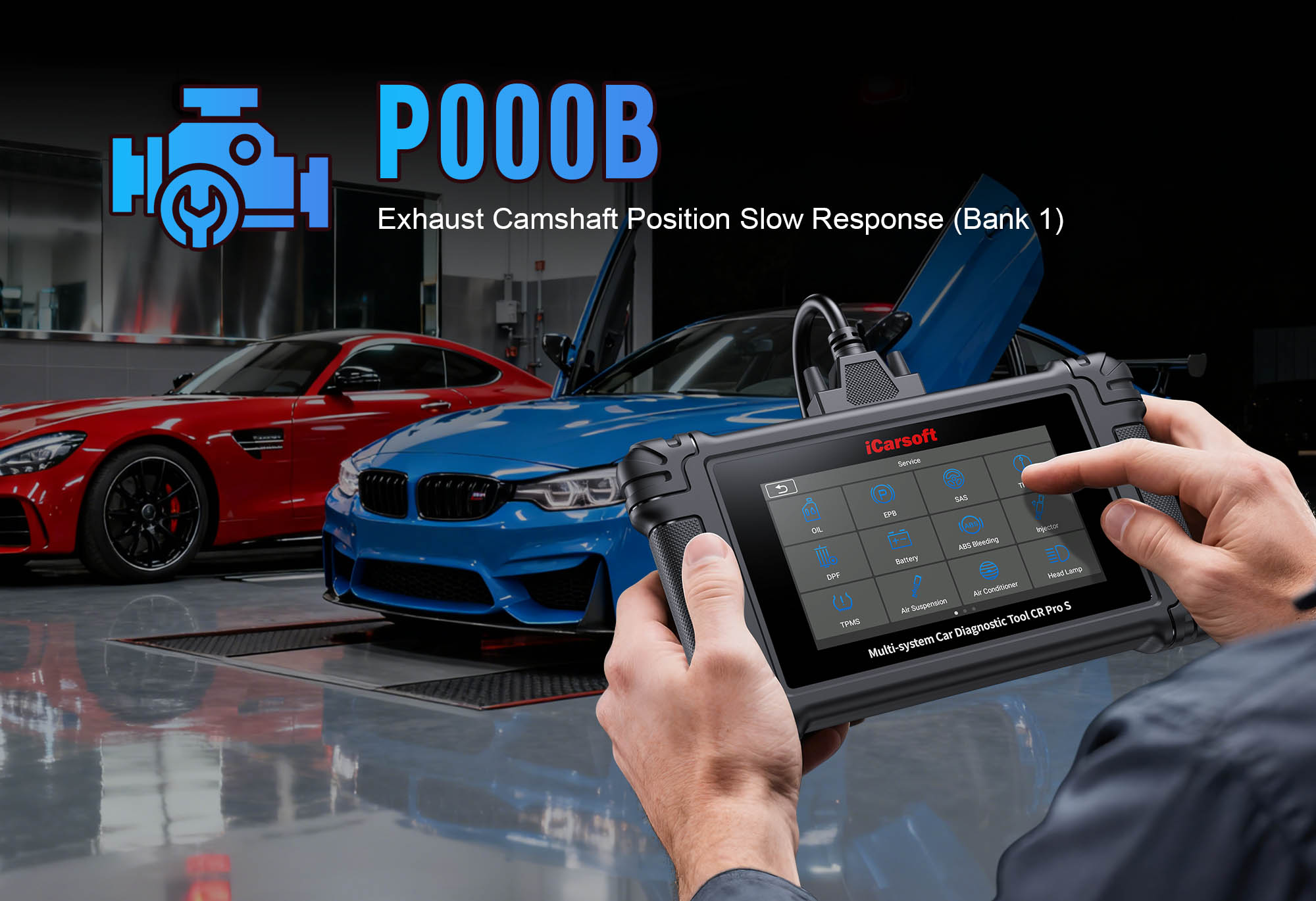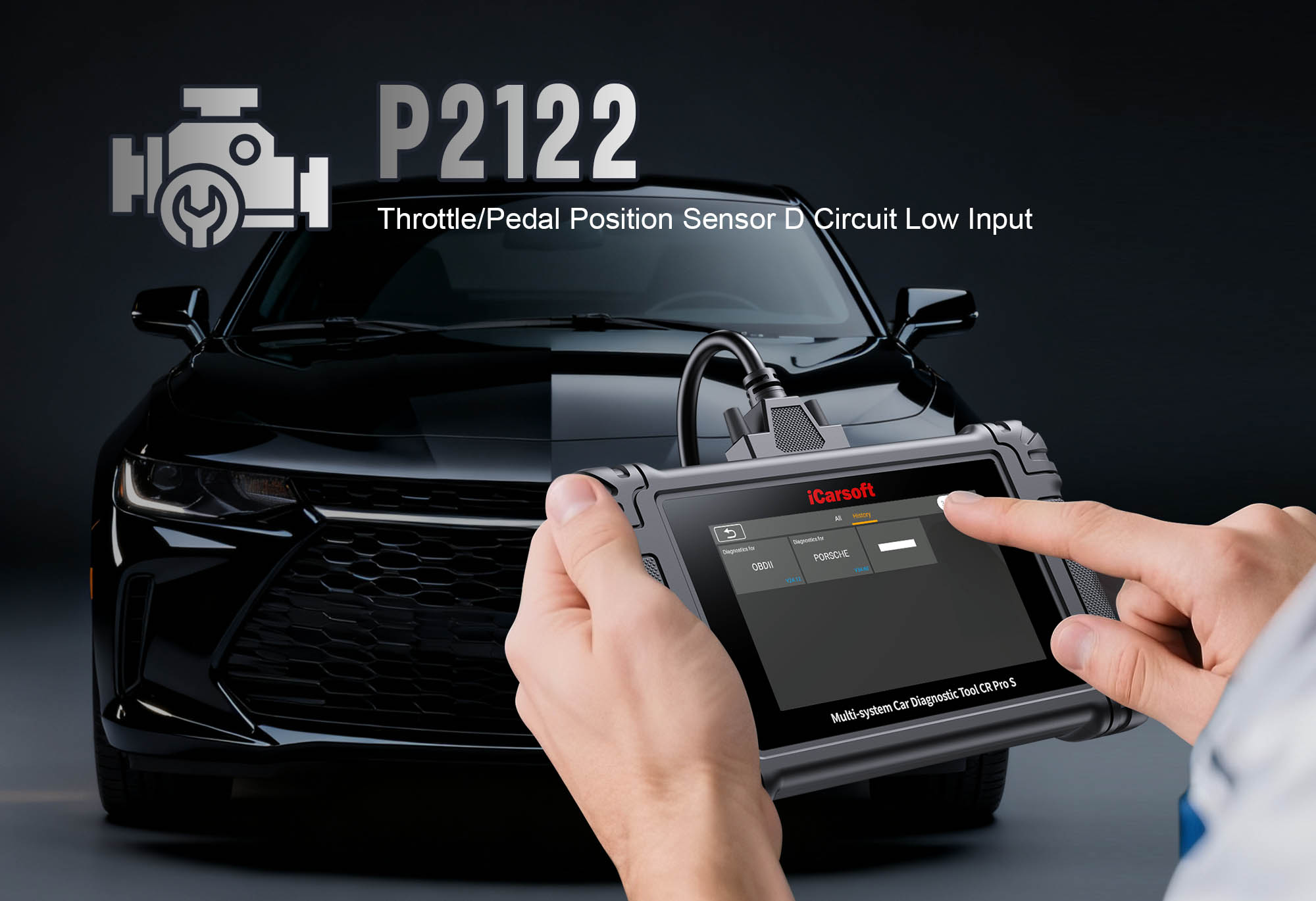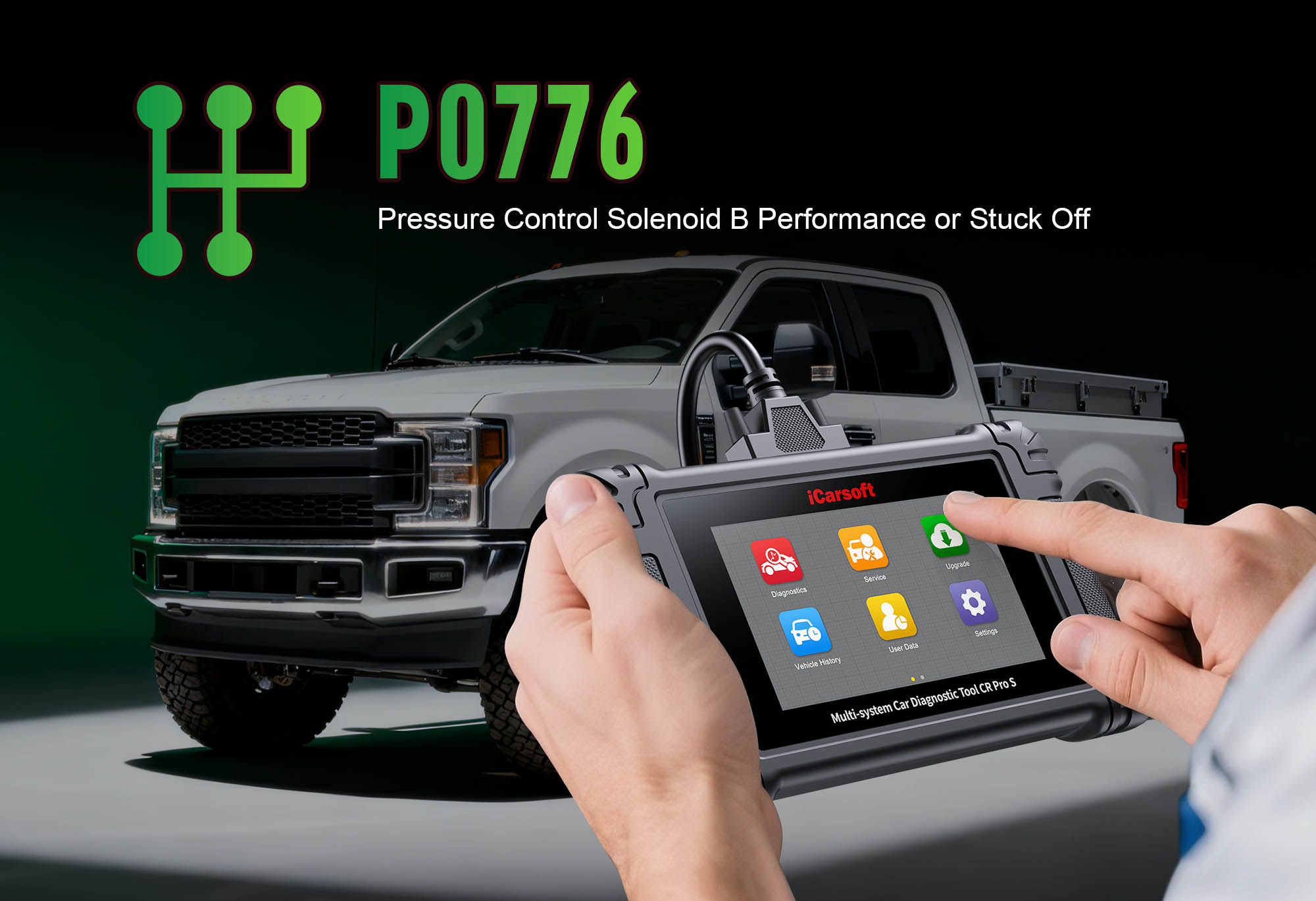When your vehicle’s check engine light comes on and a scan reveals P0341—"Camshaft Position Sensor ‘A’ Circuit Range/Performance"—you’re dealing with a tricky issue: your camshaft position sensor (CMP) is sending signals to the Engine Control Module (ECM), but they’re inconsistent, weak, or outside the expected range. Unlike P0340 (a complete circuit failure), P0341 often stems from subtle problems—like a misaligned sensor, dirty reluctor ring, or intermittent wiring issue—that basic scanners struggle to pinpoint.
Fortunately, the iCarsoft CR Eagle diagnostic tool is built to tackle P0341’s ambiguity. With its advanced signal analysis, timing sync tests, and vehicle-specific guidance, you can skip the guesswork, identify the root cause quickly, and clear the code for good. Let’s walk through exactly how to use it.
What You Need to Know About P0341 First
Before diving into diagnosis, clarify why P0341 matters and what causes it:
The CMP Sensor’s Role
The CMP sensor tracks the camshaft’s rotation, sending voltage signals to the ECM. This data syncs fuel injection, ignition timing, and valve operation with the crankshaft’s movement (via the crankshaft position sensor, or CKP).
What P0341 Means
The ECM detects that CMP signals are "off"—too weak, too erratic, or out of sync with the CKP sensor. This disrupts engine timing, leading to performance issues.
Common Causes
-
A failing CMP sensor (intermittent internal faults, not total failure).
-
Misaligned sensor (too far from/too close to the camshaft’s reluctor ring).
-
Dirty/damaged reluctor ring (oil, carbon, or missing teeth distort signals).
-
Stretched/jumped timing chain (throws off camshaft-crankshaft alignment).
-
Corroded/worn wiring (creates variable resistance in the CMP circuit).
-
Outdated ECM firmware (misinterprets valid signals as faulty).
Key Symptoms
Rough idle, slow acceleration, increased fuel use, or occasional stalling—symptoms that often come and go (thanks to P0341’s intermittent nature).
Why iCarsoft CR Eagle Beats Basic Scanners for P0341
Basic OBD-II scanners can only read P0341 and tell you it’s a "CMP range fault"—they can’t analyze why the signals are bad. The CR Eagle fixes this with specialized features tailored to P0341:
Waveform Analysis
Visualizes CMP signals to spot subtle irregularities (e.g., flattened spikes) basic tools miss.
Cam-Crank Sync Tests
Compares CMP and CKP data to rule out timing chain issues (a hidden P0341 cause).
Sensor Alignment Guides
Shows exact positioning specs (e.g., sensor-reluctor gap) for your vehicle.
Bi-Directional Control
Manually activates the CMP sensor to test for intermittent faults.
ECM Adaptation Resets
Clears old error data after repairs to prevent false code returns.
Step-by-Step: Diagnose P0341 with iCarsoft CR Eagle
-
Connect the Tool & Confirm the Code
-
Plug the iCarsoft CR Eagle into your vehicle’s OBD-II port (under the dashboard) and power it on.
-
Select your vehicle’s make, model, and year (use AutoVIN for accuracy—critical for CMP sensor specs and location).
-
Navigate to OBD-II > Read Codes to confirm P0341. Note related codes (e.g., P0340 for total failure, P0016 for cam-crank sync loss)—these narrow down the issue.
-
Tap Code Description to see vehicle-specific details (e.g., "CMP signal voltage <0.5V for 3 consecutive seconds" on a Ford F-150).
-
Analyze CMP Sensor Waveforms
P0341’s root cause often hides in signal quality—use the CR Eagle’s waveform tool to uncover it:
-
Go to Engine > Live Data > Waveform Analysis > Camshaft Position Sensor.
-
Start the engine (idle) and let the tool capture 30 seconds of data. A healthy CMP sensor shows:
-
Sharp, consistent voltage spikes (0.5V to 5V) as reluctor ring teeth pass.
-
No flat lines, delayed pulses, or irregular peaks.
-
Compare your waveform to the CR Eagle’s Reference Library (preloaded with manufacturer specs):
-
Flattened spikes: Failing sensor (internal wear reduces signal strength).
-
Erratic peaks: Dirty reluctor ring or loose sensor (signals are distorted).
-
Missing spikes: Damaged reluctor ring (missing teeth).
-
Test Camshaft-Crankshaft Sync
A stretched or jumped timing chain misaligns the camshaft and crankshaft—triggering P0341 even with a good sensor. The CR Eagle’s sync test confirms this:
-
Navigate to Special Functions > Timing Tests > Cam-Crank Sync Check.
-
Follow on-screen prompts to rev the engine to 2,000 RPM (keep it steady for 10 seconds).
-
The tool displays a Sync Offset (normal: ±1°; anything over ±3° means timing chain issues).
-
Offset >3°: Stop testing—have a mechanic inspect the timing chain (driving further can damage valves).
-
Offset <3°: Rule out timing issues; focus on the sensor or wiring.
-
Check Sensor Circuit Health (Resistance & Voltage)
Corroded wiring or a weak power supply can distort CMP signals. Use the CR Eagle’s built-in multimeter to test the circuit:
-
Turn off the engine and disconnect the negative battery terminal.
-
Locate the CMP sensor (use the CR Eagle’s Component Location feature—e.g., top of the cylinder head on a Honda Civic). Disconnect its electrical connector.
-
Test Resistance: Set the CR Eagle to Resistance Test and connect probes to the sensor’s two signal pins (refer to the tool’s wiring diagram for labels).
-
Normal range: 800–1,500 ohms (analog sensors) or 100–300 ohms (digital sensors).
-
Out of range: Faulty sensor (replace it).
-
Test Voltage Supply: Set the tool to Voltage Test and connect probes to the connector’s "5V Reference" and "Ground" pins. Turn the ignition to "On" (don’t start):
-
Normal: 4.8V–5.2V (from the ECM).
-
No voltage: Damaged wiring or ECM issue (trace wires for breaks using the CR Eagle’s Continuity Test).
-
Inspect the Sensor & Reluctor Ring
If waveforms and circuit tests point to a physical issue, use the CR Eagle’s guidance to inspect components:
-
Sensor Alignment: Check the CR Eagle’s Service Tips for your vehicle’s sensor gap (e.g., 0.020"–0.040" for a GM 2.0L turbo). Use a feeler gauge to verify—too much/too little gap distorts signals.
-
Reluctor Ring: Remove the sensor (use a socket wrench—follow CR Eagle’s torque specs) and inspect the ring for:
-
Oil/carbon buildup (clean with brake cleaner).
-
Bent or missing teeth (replace the ring if damaged).
-
Wiring: Trace wires from the sensor to the ECM (use the CR Eagle’s wiring diagram). Look for frayed insulation, rodent damage, or corroded connectors (repair with heat-shrink tubing or contact cleaner).
Clear P0341 & Verify Repairs
Once you’ve fixed the root cause (e.g., replaced the sensor, cleaned the reluctor ring), use the CR Eagle to clear the code and confirm the fix:
-
Reconnect the battery and sensor connector.
-
Reset ECM Adaptations: Go to Special Functions > ECM Reset > Camshaft Sensor Relearn. This clears old error data so the ECM "sees" the repaired sensor.
-
Clear the Code: Navigate to Clear Codes and select P0341. Confirm deletion.
-
Verify Repairs:
-
Start the engine and idle for 10 minutes—check that the check engine light stays off.
-
Take a 20-mile test drive (include highway speeds and stops). Use the CR Eagle’s Post-Repair Scan to log CMP data.
-
Re-scan after the drive—no P0341 means the fix is successful.
How to Prevent P0341 from Recurring
-
Clean the Reluctor Ring: Add this to your annual tune-up (use brake cleaner to remove oil/carbon).
-
Check Sensor Alignment: Inspect after engine work (e.g., valve cover replacement)—misalignment is a common post-repair P0341 cause.
-
Replace Timing Chains on Schedule: Follow manufacturer intervals (90,000–120,000 miles) to avoid sync issues.
-
Scan Monthly with CR Eagle: Run CMP Sensor Health Checks to catch weak sensors before they trigger P0341.
Conclusion
P0341’s "range/performance" label makes it intimidating, but the iCarsoft CR Eagle turns guesswork into precision. By analyzing waveforms, testing timing sync, and guiding you through circuit checks, it helps you fix the real issue—whether it’s a faulty sensor, dirty ring, or wiring problem—without wasting money on unnecessary parts.
For DIYers and technicians alike, the CR Eagle isn’t just a scanner—it’s a P0341 solution. Don’t let this code slow you down—grab your tool and get your engine’s timing back on track.





